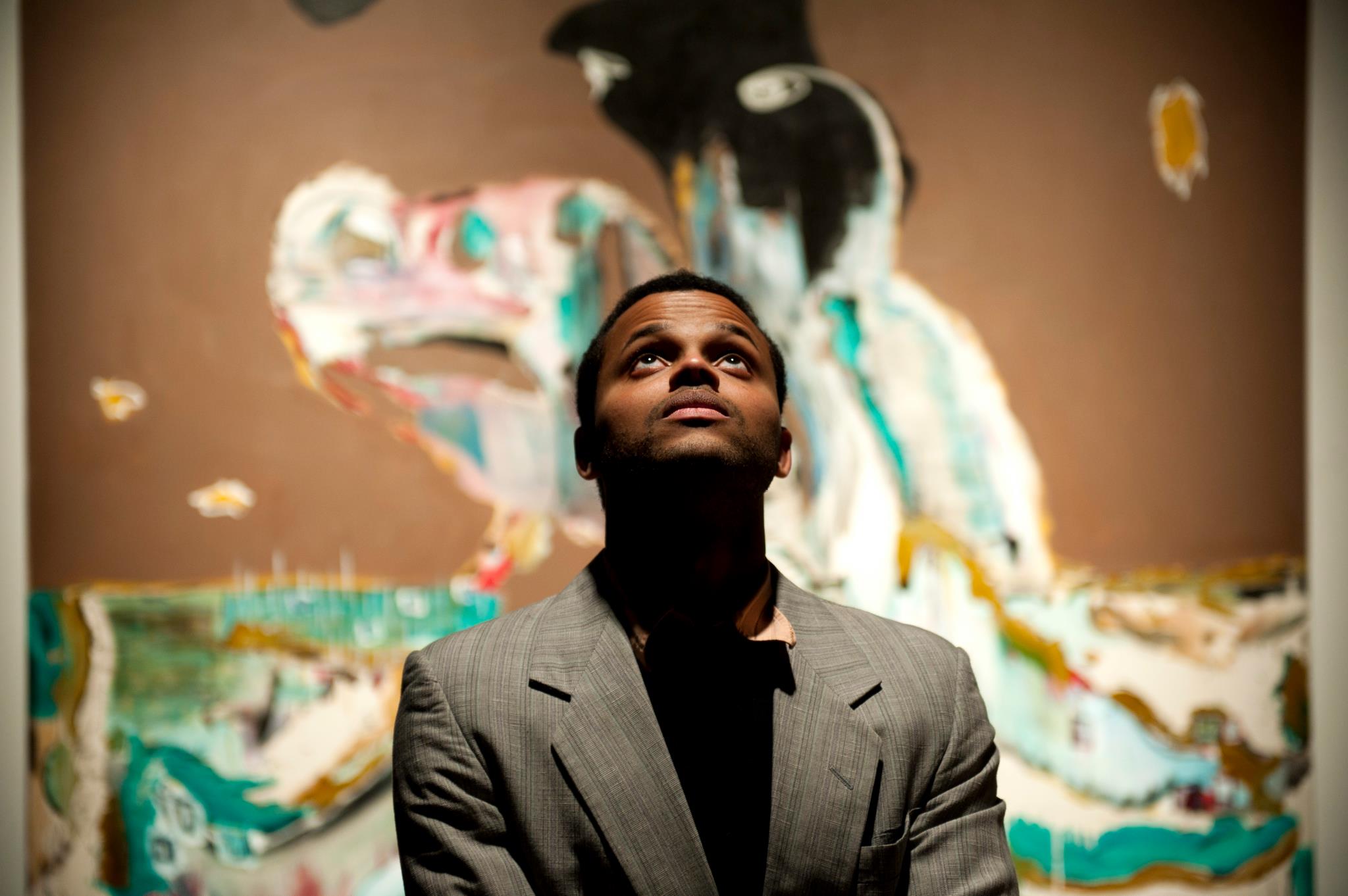
In an age in which the term “post-” art is ubiquitous, London-based painter Manuel Mathieu is an anomaly.
The 29-year-old Haitian is influenced by veterans like Sol Lewitt or Teresa Margolles, rather than Internet memes. This is all a bit strange from a freshly-anointed graduate of Goldsmiths’ experimental MFA program, but his approach is working.
Even prior to his recent graduation from Goldsmiths in July, Mathieu’s résumé was robust, listing group shows at the Grand Palais in Paris as well as the Musée d’art contemporain de Montréal, and most recently, a solo outing at the Institute of Contemporary Art, London. Fatos Üstek—curator of the 2015 revival of fig 2 at the ICA, London and assistant curator of the 10th Gwangju Biennial–selected Mathieu from a pool of over 230 applicants to be featured at the ICA in the penultimate week of the fig 2 program this past December, marking him as an artist poised for success mid-way through his studies.
“Mathieu’s approach to art is through the quest of self in the vast landscape of solitude and isolation,” Üstek told artnet News. “He creates an insular depiction of human emotions.” The artist creates cerebral, stylized paintings that are at once highly personal and provocative, yet at the same time slightly unnerving in their intimacy.
He often invokes his native country’s political history as a springboard: Mathieu was born in the year that the Haitian uprising brought the Duvalier era to an end, and he is named after the protagonist in Jacques Roumain’s 1941 Haitian classic novel Gouverneurs de la rosée, or Master of the Dew. As such, haunting, gory forms resembling people or body parts appear in his paintings, figures that are seemingly adrift in an anonymous setting—and always appear to be alone.
The up-and-comer will next be seen as one of the five artists selected for London’s 2016 Deptford X festival, where he was commissioned to create a work specific to the rapidly gentrifying neighborhood. In a departure from painting, Mathieu will create his largest project to date, an installation consisting of flags suspended on wire, which continues to focus on solitude and exile. In tying his own practice’s themes to the local socioeconomic shifts, Mathieu aims to use the work, he tells artnet News, “to talk about disappearance, being pushed away, displaced, invisible.”
“One Future,” Installation View, 2016. Courtesy Agnese Santo.
The through line in his work is the way in which identity and memory are shifted by history and power structures. His Goldsmiths degree presentation, titled “One Future,” explored the Duvalier’s dictatorships, which the artist categorizes as collateral damage of the Cold War. He incorporated images of his grandmother’s husband, a former colonel under Francois Duvalier, further underscoring the threads of terror and upheaval that resound throughout his practice.
But his work is not only cerebral; it’s also incredibly physical. “I deal with images like structures,” he says, initially “destroying” them, and then, through a variety of techniques—like scratching and frottage, insertion, drawing, and dripping–he attempts to make them reappear again.
And though he is a prolific artist, the point at which he deems a work “complete” can range from a day to months, in a process that he compares to “running in the dark: eventually you hit something, and you know.”
Deptford X visual arts festival runs from September 23 through October 2, 2016.